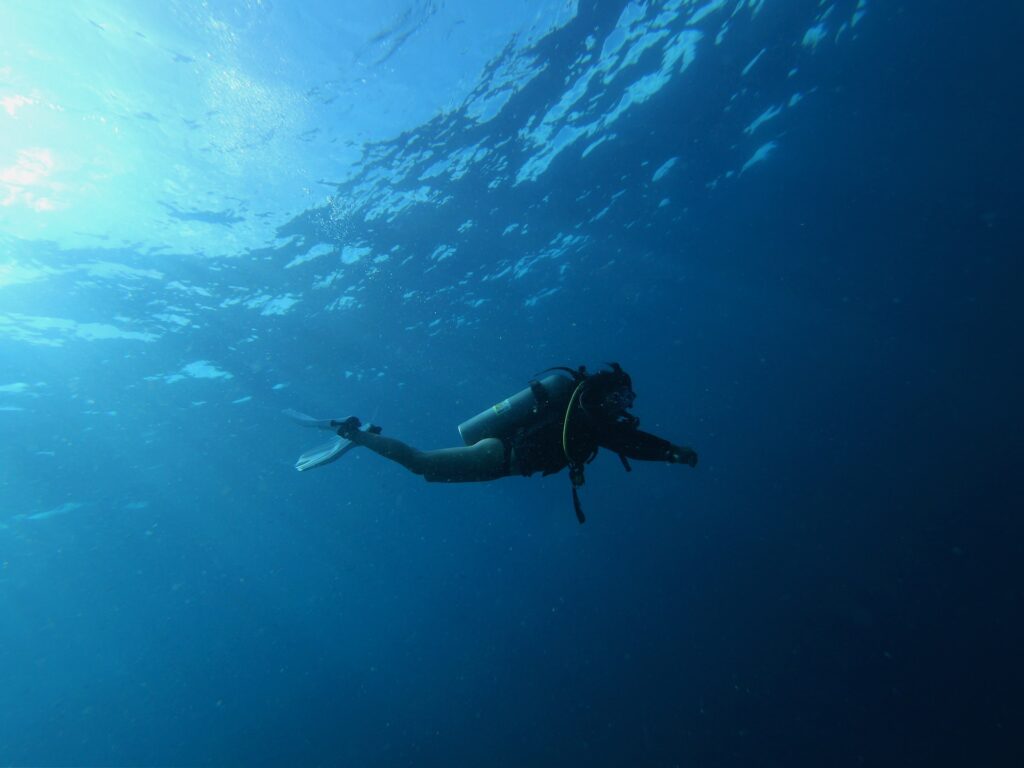How Long Does Decompression Take?
Candace Reno January 4th, 2024 Posted In: Articles Tags: SCUBA
SCUBA diving is an exciting, extreme sport that leads you to amazing adventures under the ocean! There are limits though of how long you can stay underwater before you hit your limit of nitrogen or other gas absorption. Whether diving for recreational or technical reasons, proper decompression on the way back up and after diving is important for your safety. How long decompression takes is dependent on your dive profile. For this reason, SCUBA diving should only be done by those trained to do so or under the supervision of an instructor.
What is Decompression?
Decompression during SCUBA diving is your body’s way of eliminating gases absorbed that have nowhere to go but sit in and saturate your tissues. In SCUBA diving, air or sometimes trimix (helium/nitrogen/oxygen) are used to breathe underwater. Your body can use the oxygen it absorbs for metabolism. However, the nitrogen and helium are inert and have no use by our bodies. By ascending slowly on dives, these gases escape in our breath.
On the surface between dives, decompression still takes place as the gases absorbed exit the tissues into blood circulation, end up in the lungs, and get exhaled into the atmosphere. It can take up to 24 hours to fully decompress after a day of diving. For that reason, any repetitive dives done throughout the day tend to be shorter and/or shallower to account for gases still in the body.
How Long Does Decompression Take?
How long decompression takes is highly dependent on your dive profile, whether planned or unplanned deco diving.
Recreational Diving
In technical SCUBA diving terms, recreational diving is referred to as “no-stop” or “no-deco” diving. This means that as long as you are within the recreational dive depth limits of 130 feet and within your no-stop time limits for the given depth, then you are not required to make a decompression stop on the way up. However, a safety stop is always highly recommended. If you accidentally exceed your no-stop limits, then a decompression stop is required.
If you are wearing a dive computer, it might have you stop for a little bit at a depth like 40 feet. Mostly, you will stop at 15 feet for either 8 minutes or 15 minutes, depending on how long you overstayed your time underwater, either < 5 minutes or > 5 minutes, respectively. There is also a penalty associated with this that includes not diving again for 6 or 24 hours, respectively. A 15-minute decompression stop will most likely not even be possible with the remaining air supply on this kind of dive. If you are recreationally diving, then dive well within your limits to avoid a decompression dive situation.

Decompression Diving
Decompression diving is when SCUBA dives are planned with required decompression stops. How long will decompression take on these kind of dives? This is entirely dependent on how deep you go and how long you stay. These kind of dives can be done by trained recreational divers, however, most of these dives are done as commercial dives for work purposes. Typical depths can be anywhere from 65-1000 feet with decompression stops taking several hours to several days!
I know what you’re thinking: how do divers eat, drink, and use the bathroom on such long dives? Divers often have food and water supplies on them that they can guzzle down by temporarily removing the regulator. Divers often wear diapers or have pee valves on their dry suits to allow them to use the restroom.
Because of today’s technology and the different gases used in decompression diving, decompression divers use dive computers to plan and execute their dives including the decompression stops. Sometimes the decompression stops are longer than the dive, especially if the dive exceeds 200 feet! In general, decompression can take one day per 100 feet of seawater. Careful planning of the gas supply needed for the entire dive is necessary. Also, safety supplies of gas in the form of air, enriched air nitrox, or oxygen are staged along an ascent line.
For feasibility both logistically and monetarily, commercial dives down very deep, say several hundred feet, make use of a living quarters underwater in a hyperbaric dive support vessel. This allows dives to be made day after day while living at the same depth. Once at the depth, the diver’s body is saturated and these dives can be made safely. Then when the work is done, the diver makes the long multi-day decompression stops back to the surface.
Record Deco Stop
Today’s record of the deepest dive ever made by anyone is to 2300 feet! This was set in 1992 by a French diving company using a hyperbaric diving chamber to first saturate the divers at depth. The deepest open circuit SCUBA dive without support of a chamber was to 1090 feet by Ahmed Gabr in the Red Sea in 2014. This dive was 15 minutes long and took him almost 14 hours to get safely back to the surface!
What If a Decompression Stop Is Missed?
If a decompression stop is missed, the diver will be at a significantly higher risk of decompression sicknesses. Decompression sickness is highly dependent on the diver’s physiology and dive profile. Doing decompression stops, no matter how long they may take, is very important to minimize the risk of getting decompression sickness on any dive.
In summary, SCUBA with or without decompression stops requires proper training and equipment to dive safely. How long decompression takes during or after making a SCUBA dive can vary greatly depending on your dive profile. So go get trained, prepare adequately, and have fun making those recreational or decompression dives!

